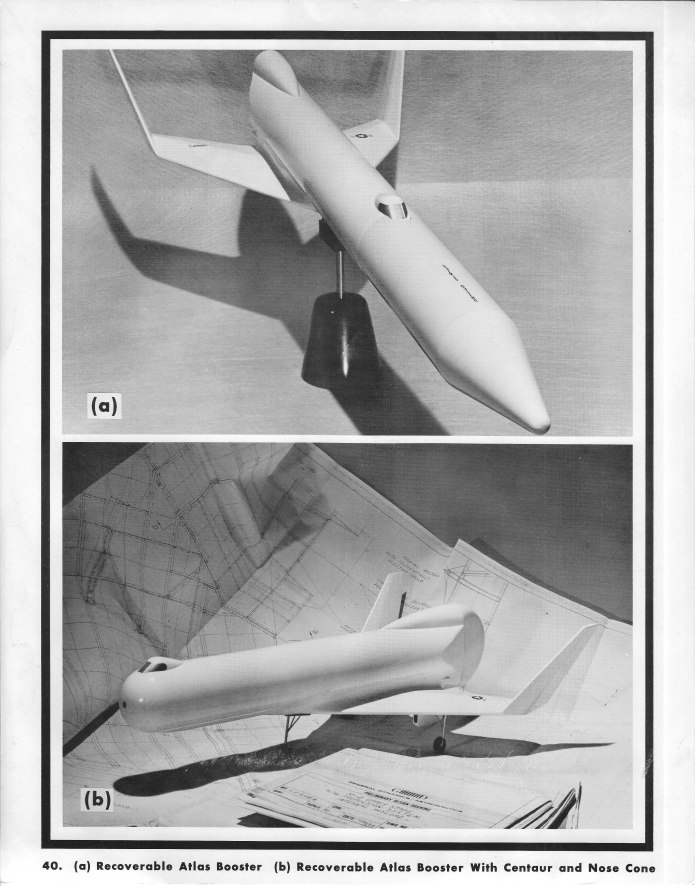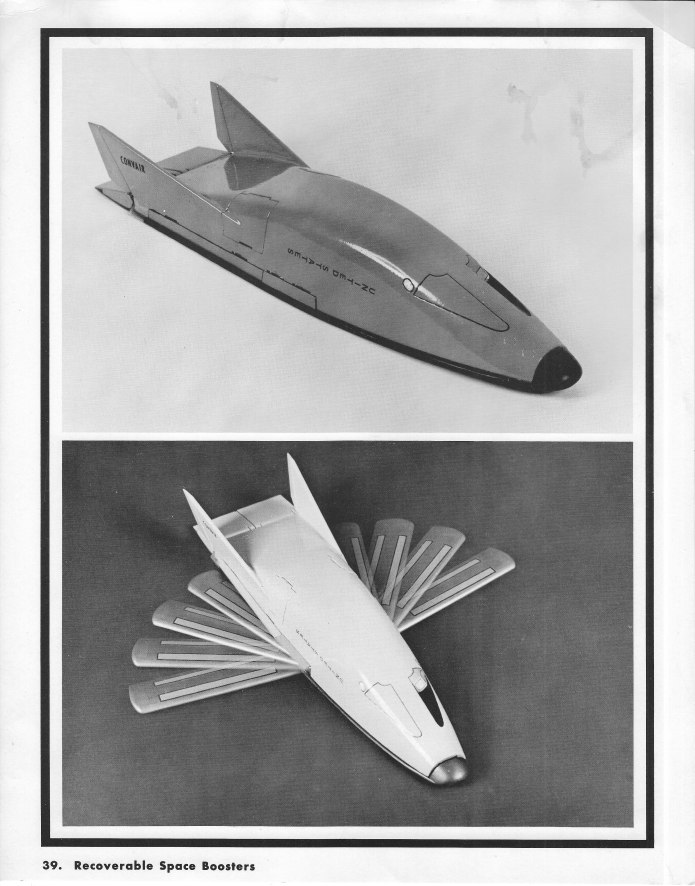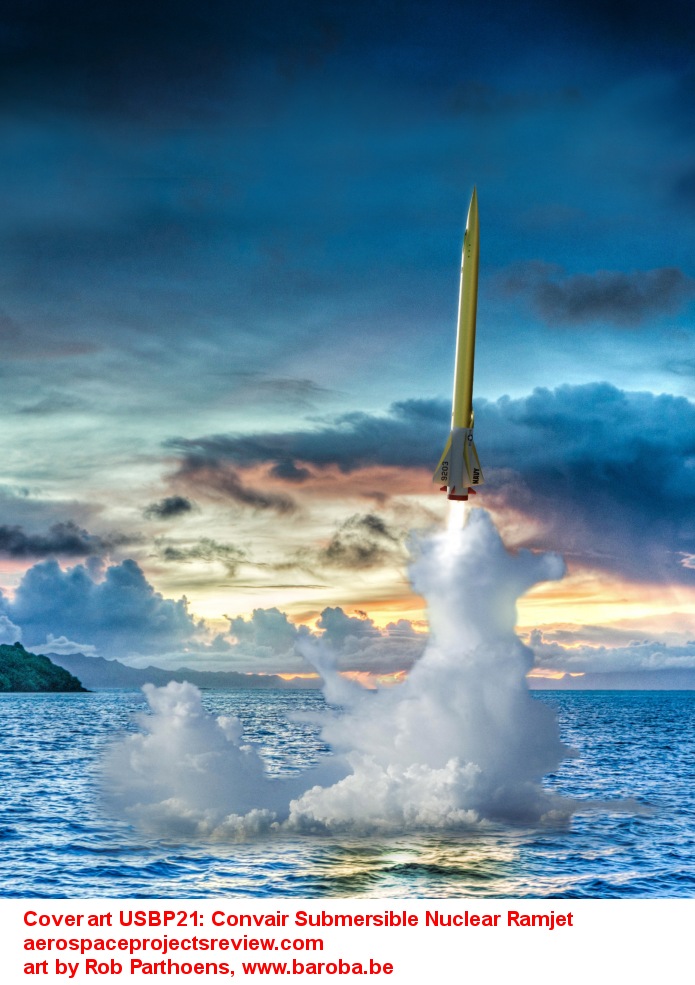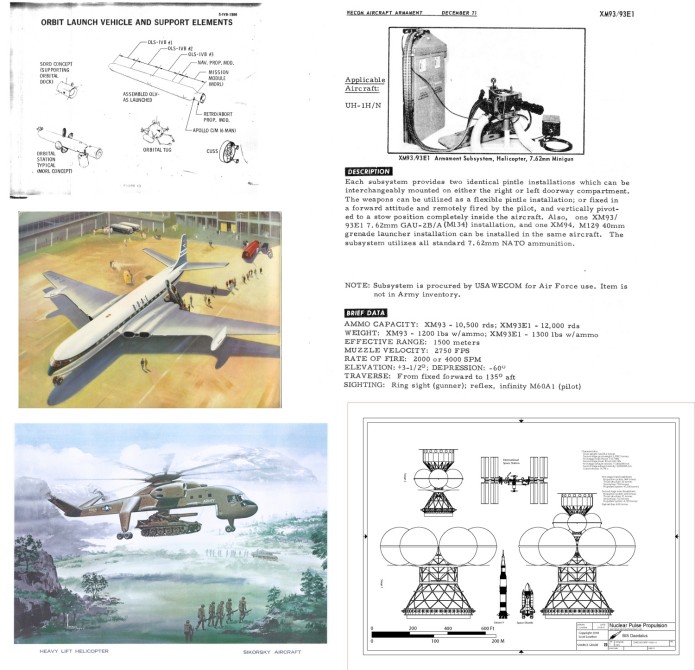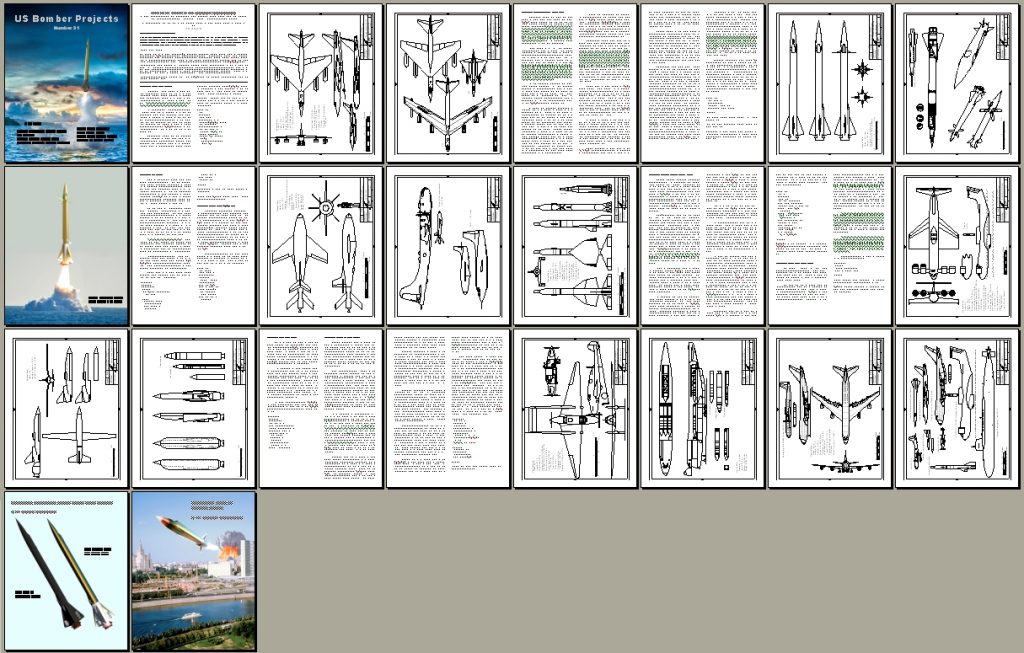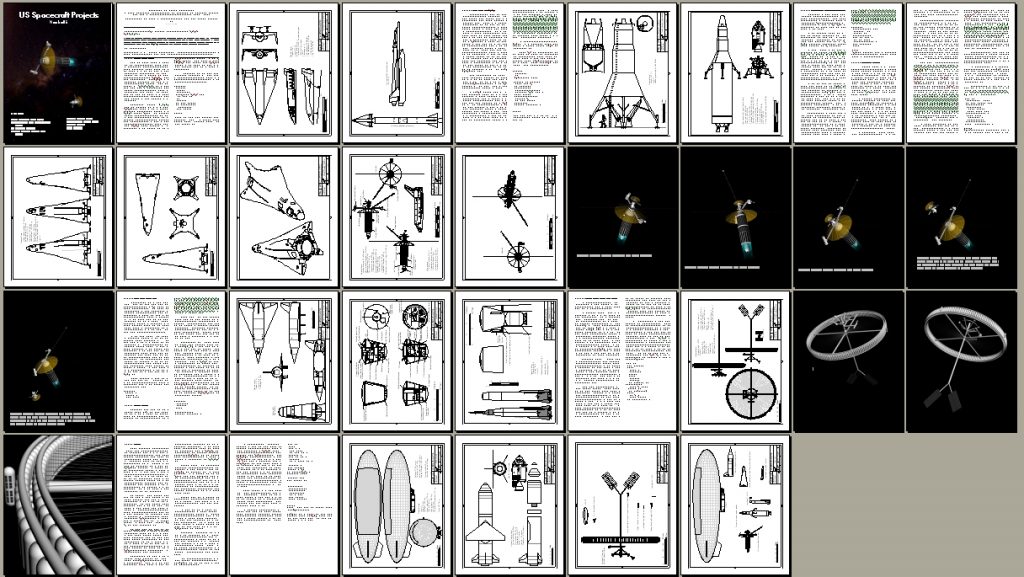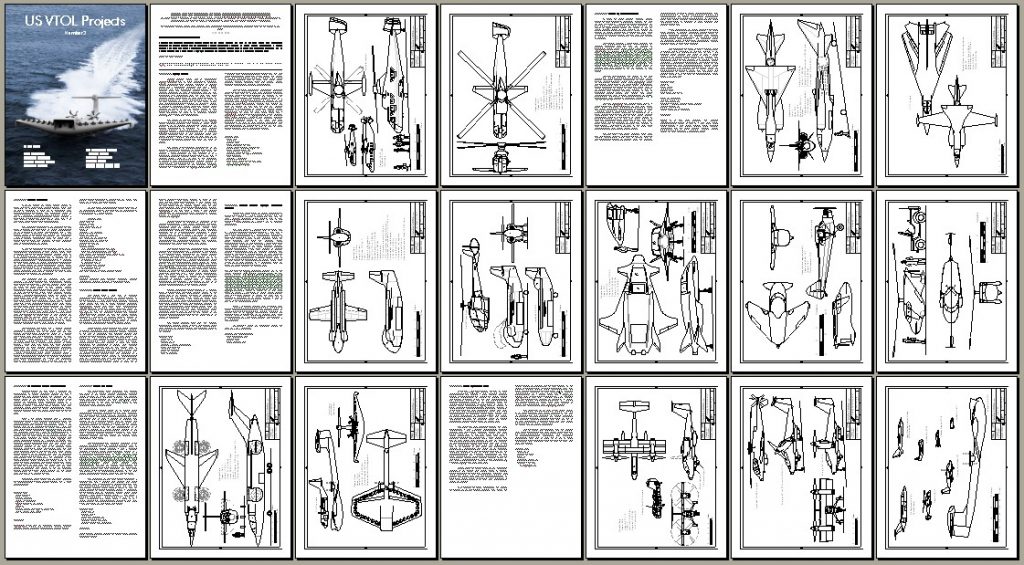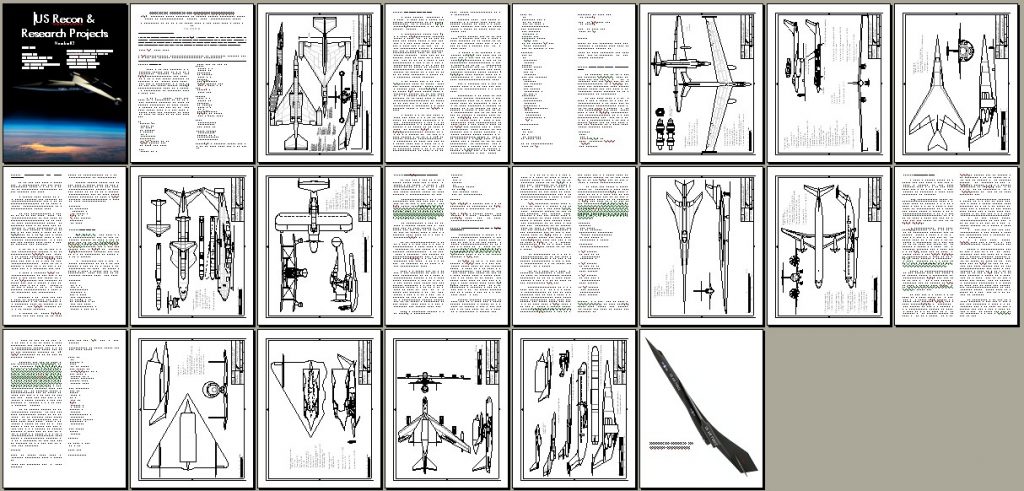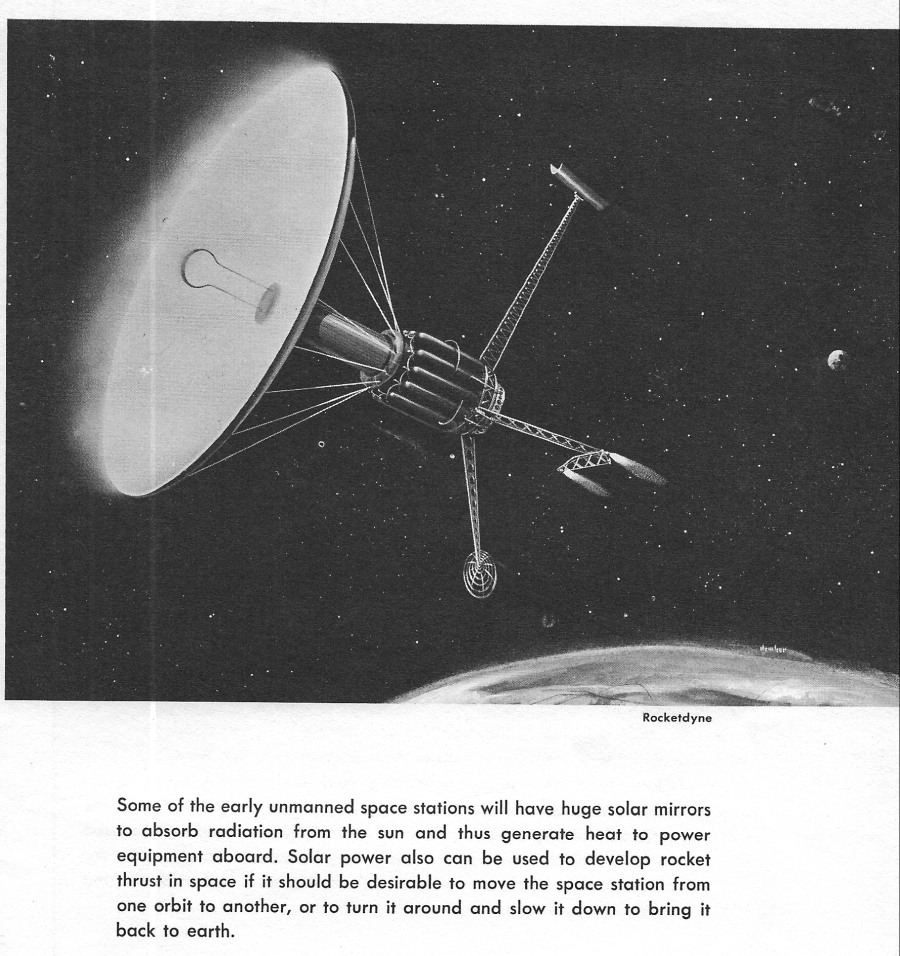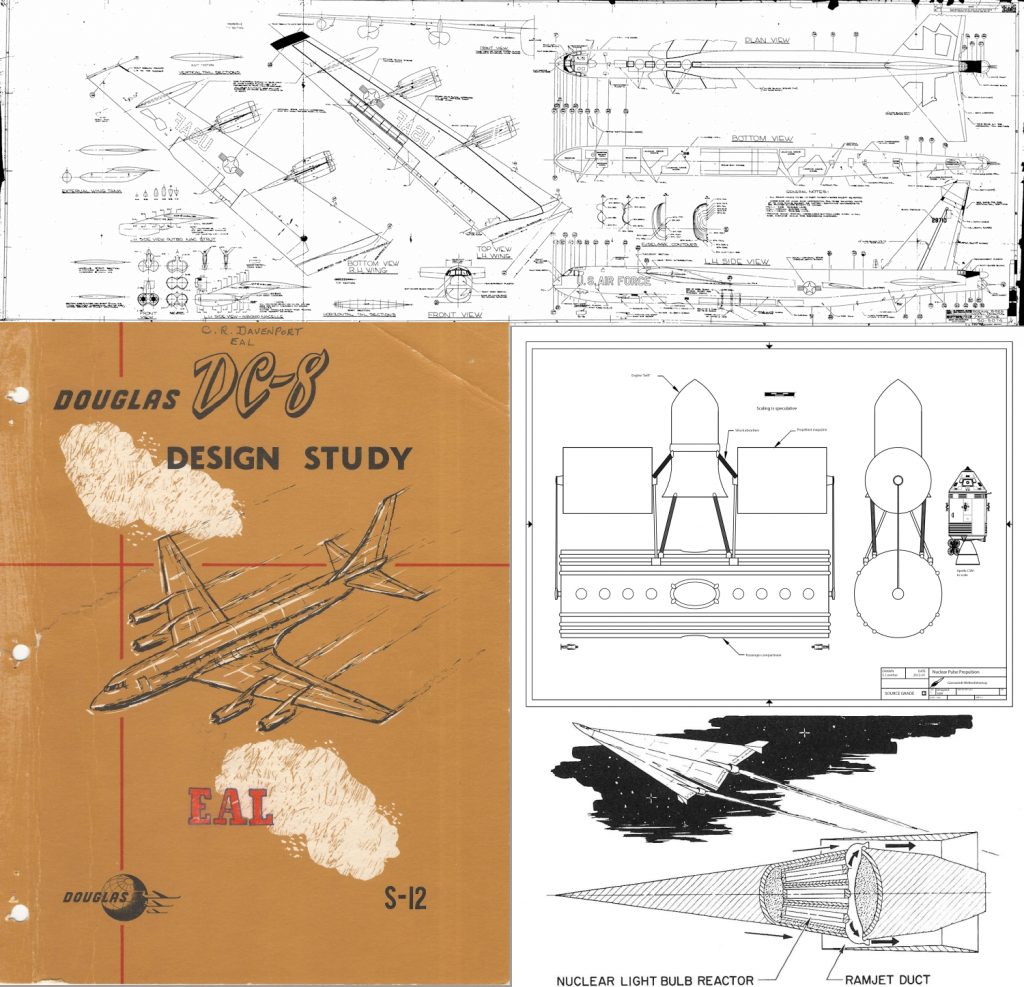In the 1960’s, prior to the Space Shuttle program, General Dynamics/Convair studied using the Atlas ICBM as a space launch system. no surprise there. But one concept called for a nearly fully reusable Atlas, equipped with wings, jet engines, landing gear and a cockpit to recover the booster in one reusable piece. It would be topped with either an expendable Centaur and satellite/space probe upper stage or a smallish manned lifting body spaceplane with its own built-in propulsive capability. At the time General Dynamics released sizable “educational” cards with information and photos of models of the reusable Atlas. Unlike the normal Atlas, this version did not drop the outboard “booster’ engines, but kept them throughout the mission. An inflatable, deployable afterbody was proposed to fair over the engines after burnout to reduce base drag.
I have uploaded righ-rez scans of both sides of this poster-sized card to the 2018-05 APR Extras folder on Dropbox for APR Patrons at the $4 level and up.
Additionally, a report on this concept is available as Space Doc 52.
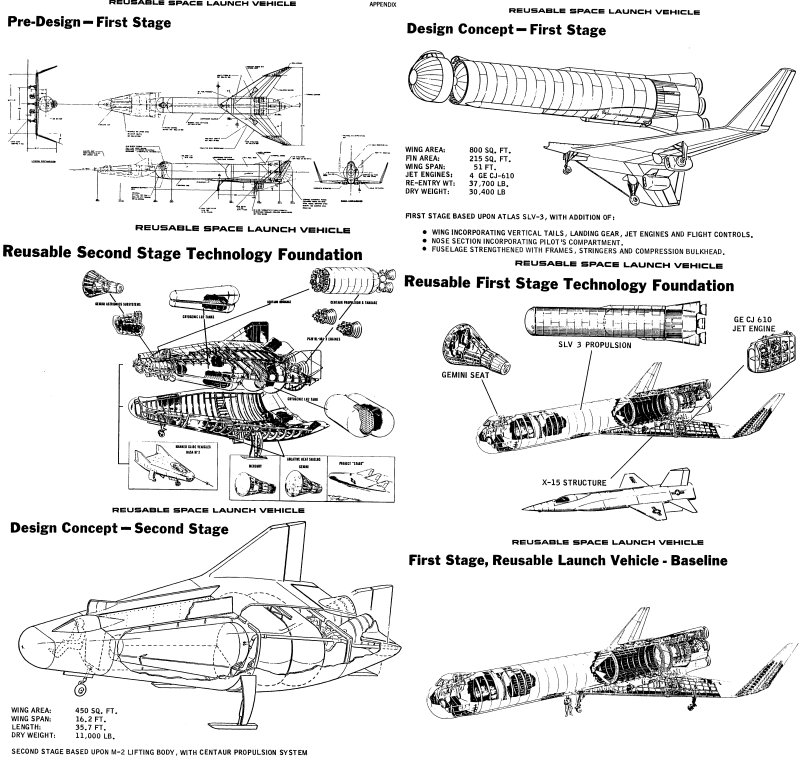
If you are interested in these Reusable Atlas model images and a great many other “extras” and monthly aerospace history rewards, please sign up for the APR Patreon. What else are you going to spend $4 a month on?
